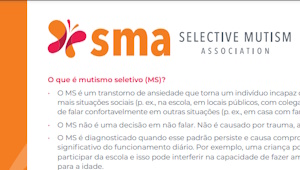Online Library
Selective Mutism in Tweens/Teens
Most older children with selective mutism (SM) have had symptoms since they were young, and for several reasons, may end up not receiving effective treatment. SM treatment has become more nuanced and specialized as clinical research has continued to determine key components to effective treatment. Without specific training in these methods, even well-trained and well-intentioned therapists may not be aware of these nuances, making it challenging to treat SM effectively. Therefore, even if diagnosed with SM at an early age, SM may persist for older youth without the right treatment approach. Additionally, kids with an early onset of SM may not be diagnosed until later in childhood, as SM is too often misdiagnosed (e.g. as Oppositional Defiant Disorder, Autism Spectrum Disorder, Trauma) or misinterpreted as shyness – resulting in the either the wrong treatment being pursued or the symptoms/impairments being minimized.
As we know, behavioral patterns, especially related to anxiety and avoidance, become more ingrained over time. Therefore, the rule rather than the exception, is that SM becomes more pronounced and strengthened the longer it persists. Additionally, due to the nature of SM and the developmental course of youths, it is common for other disorders to develop, which may further complicate treatment.
The following are disorders that most commonly co-occur with SM in older kids.
Social Anxiety Disorder
Although SM is distinct from social anxiety disorder, kids with SM (even younger ones), more often than not, also have social anxiety disorder. This becomes even more evident as kids get older, with social anxiety very often co-occurring with SM.
Some kids with a longstanding history of SM may actually develop the ability, as they get older, to respond verbally in situations that require them to do so. For example, a child who never answered teachers or peers in elementary school may be able to start answering direct questions in middle or high school. Although the default remains a non-verbal gesture if the question/prompt allows for that, such kids might begin to provide minimal verbal responses if necessary. In these cases, their SM that might have previously had rigid boundaries around the contexts in which they speak, evolves into a more fluid and generalized pattern of minimal speech. That is, their verbal output remains drastically different from situations in which they are comfortable, but they may have learned to navigate school and other anxiety-provoking settings through minimally responding.
Depressive Disorders
SM is highly impairing, often impacting social, academic, and family functioning. Therefore, not only do the symptoms exacerbate over time, but the impact of the SM also becomes more pronounced, which can impact self-esteem and self-efficacy. Older kids with SM are often aware of their struggles and wish that things were different. Many have had experiences in trying to manage their SM and minimize its impact. Repeated, unsuccessful efforts can lead to feelings of demoralization and hopelessness/helplessness around the possibility of the situation changing. Therefore, older youth with SM are at risk for developing depression.
Other Anxiety Disorders (generalized anxiety, specific phobias)
Kids with SM are predisposed to anxiety, which can manifest in a variety of ways. As they get older, their anxiety might extend to other domains, including worries about specific situations or more general worries (evidenced by “what if” thoughts).
Obsessive-Compulsive Disorder (OCD)
OCD is another diagnosis that can co-occur with SM, which most often manifests as perfectionism. This might appear as needing to say “just the right thing”, and/or in other areas as well (e.g., writing, art, other hobbies, appearance).
Neurodevelopmental Disorders
Other disorders that can co-occur with SM include a language/communication disorder, Attention-Deficit/Hyperactivity Disorder (particularly predominantly inattentive presentation), and infrequently, Autism Spectrum Disorder. Given the overlap in the presentation of these symptoms with SM, a comprehensive assessment is usually recommended for diagnostic clarity.
Contributed by : Shelley Avny, Ph.D., Child & Adolescent Anxiety Practice




